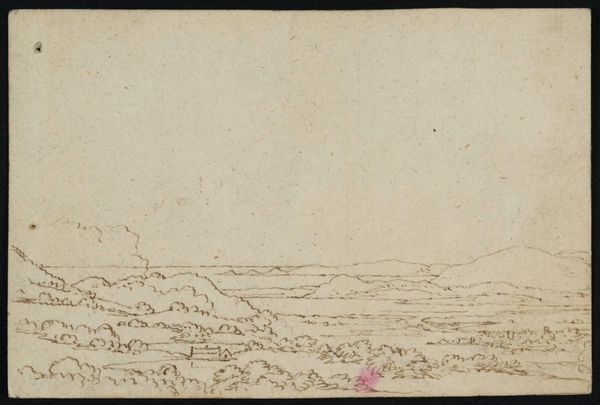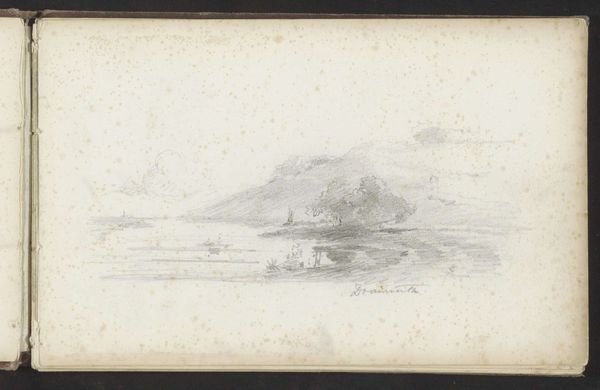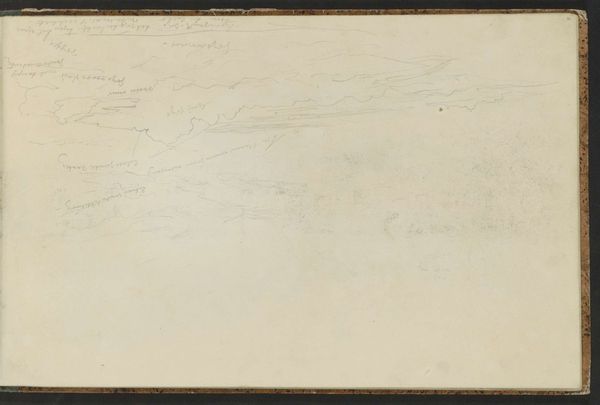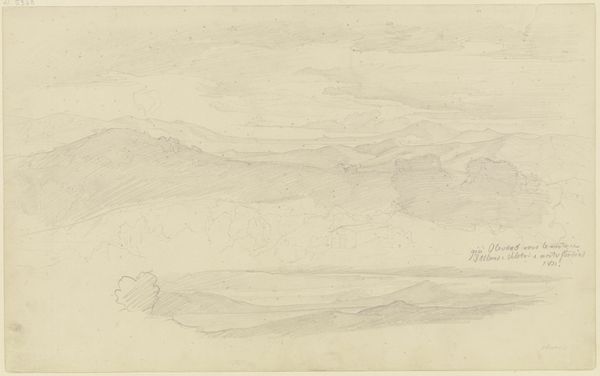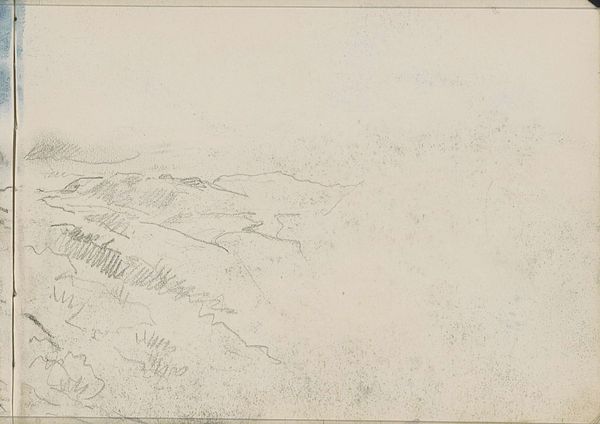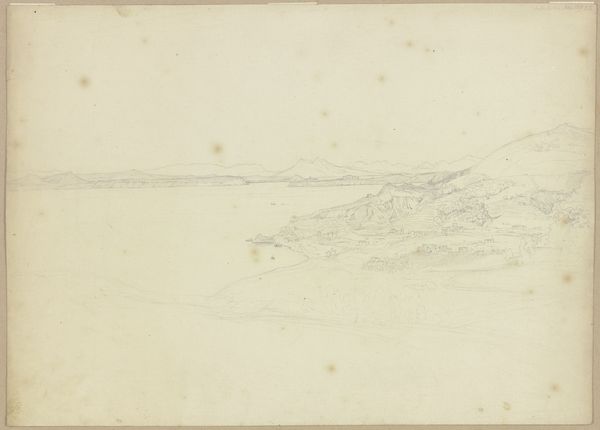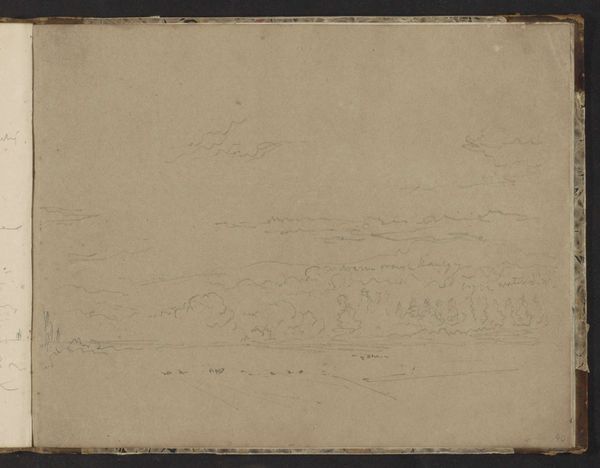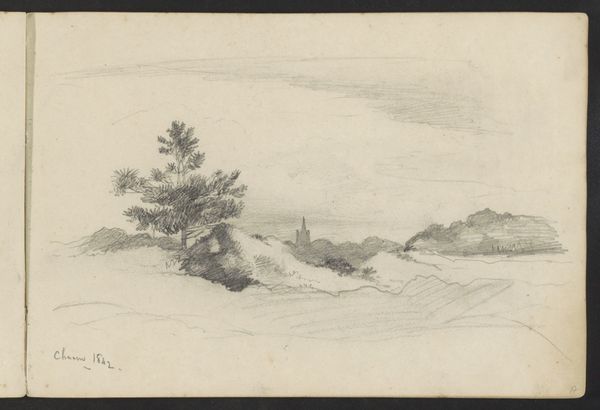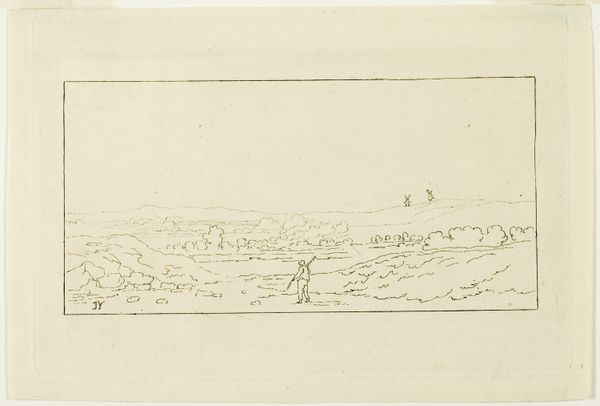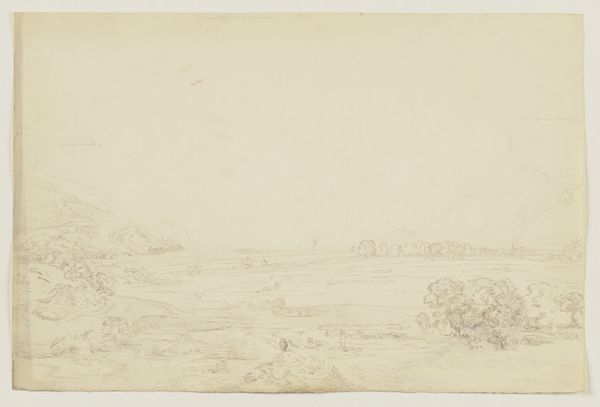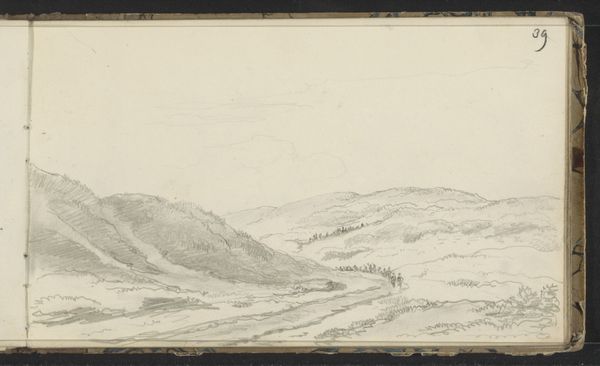
drawing, pencil
#
drawing
#
pen sketch
#
sketch book
#
landscape
#
personal sketchbook
#
sketchwork
#
ink drawing experimentation
#
romanticism
#
pen-ink sketch
#
pencil
#
pen work
#
sketchbook drawing
#
storyboard and sketchbook work
#
sketchbook art
#
realism
Copyright: Rijks Museum: Open Domain
Johannes Tavenraat sketched this vista of Materborn and Nijmegen using graphite. A seemingly simple landscape is, in fact, steeped in symbolic meaning. The winding road in the foreground mirrors the paths of life. Such a motif is as old as art itself, appearing in ancient Egyptian tomb paintings, where rivers symbolized the journey to the afterlife. Even now, a winding path evokes a sense of exploration and the unknown that touches our subconscious. Observe the modest cottages nestled amidst the trees. These humble dwellings call to mind the enduring human desire for shelter and belonging. Like the forest hut of the mythical Wild Man, this image invites us to consider humanity's complex relationship with nature. The symbolism echoes through centuries and cultures. These motifs reappear in German Romanticism, where forests become the home of the soul, a place for contemplation and spiritual awakening. Even in its simplicity, this drawing reveals how certain fundamental forms continually resurface.
Comments
No comments
Be the first to comment and join the conversation on the ultimate creative platform.

